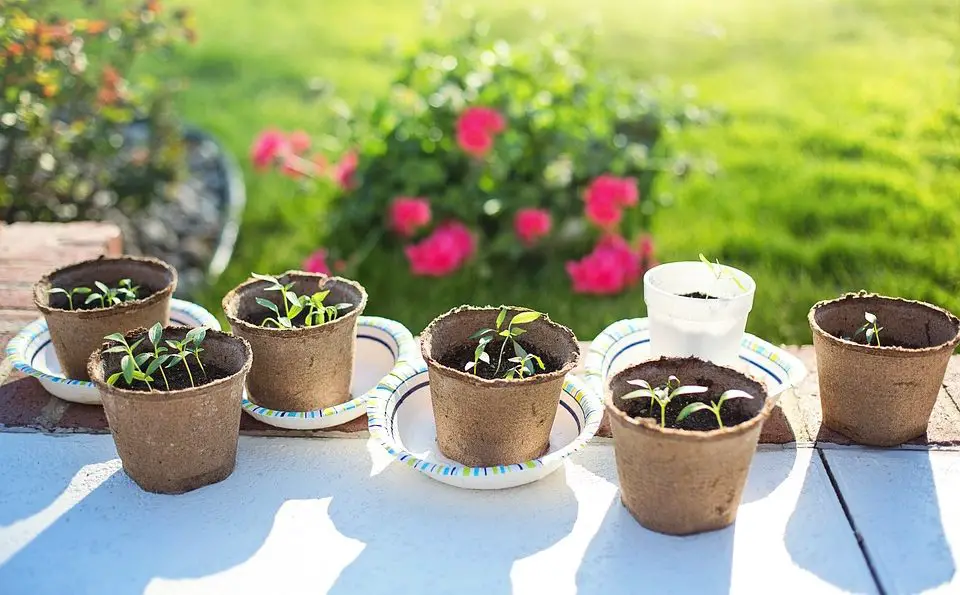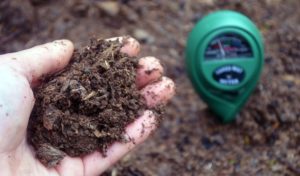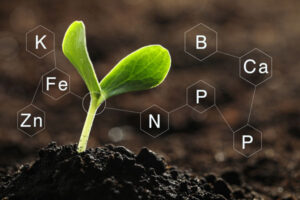If you have ever started a garden, you know how exciting it is to sow seeds, whether directly into beds, containers, or in starter pots under a grow light. The anticipation of seeing little sprouts break through the soil is tempered only by the patience required to wait for signs of life. It’s reasonable, therefore, to feel disappointment when that breakthrough moment never occurs. While a 100% germination rate is an admirable goal, let’s face it, sometimes that rate is much lower. (To learn more about germination rates and how to test for viability, check out my article: Seed Germination Rates and How to Test for Viability.) Why don’t seeds germinate? What can you do to solve the problem? Here are the top ten reasons seeds don’t germinate and what you can do to remedy the situation.
1. Improper Temperature
Seeds are a bit like Goldilocks, who found Papa Bear’s porridge too hot and Mama Bear’s porridge too cold. Seeds need soil temperatures that are more like Baby Bear’s porridge, just right! The right temperature will depend on the type of seed you are planting. Some seeds, like spinach and lettuce, will germinate at minimum temperatures of 35°F (2°C) and 40°F (4°C), while others, like squash, require soil temperatures at least 60°F (15°C).[1]
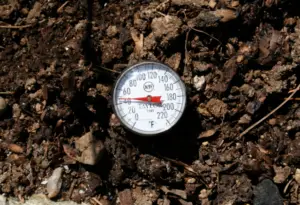
This article contains affiliate links. If you make a purchase using one of these links, I will receive a very small commission at no additional cost to you, and it will help me maintain this website. Rest assured, I only recommend products I actually like!
It is important to note that soil temperature is not the same as air temperature. You can measure the temperature of the soil by using a soil thermometer. You could also use a compost thermometer, although the probe is much longer than is needed. To take the soil’s temperature, follow the manufacturer’s directions. But generally speaking, in the morning, insert the probe approximately 2 inches into the soil. After a few minutes have passed, record the reading. Repeat this in adjacent areas to get the average temperature of the soil in that particular bed or container.
If the soil is too cold to direct sow, you can cover it with a dark tarp, which will absorb the heat from the sun, and transfer it to the soil. Another option would be to use a cold frame, a row cover, or a greenhouse. If using a greenhouse, watch the temperature as it can heat up quickly and become too hot for some seeds. On the other hand, if you are starting seeds under a grow light, you may need the added boost of a heat mat to help raise the soil’s temperature.
If you find that the soil temperature outdoors is too warm, you can water the soil and cover it with mulch to cool things down. You can also use a row cover or shade cloth to help shield the soil from the sun.
2. Improper Watering
Another common reason seeds do not germinate is improper watering. Hydrolytic enzymes stored inside the seed require water in order to activate the germination process. Water also helps soften the seed so that the roots and plant shoots can emerge. But soil that is too wet can cause seeds to rot (see #5 Damping Off). It can also create an environment where small insects, like fungus gnats, will quickly multiply.
Loose, well-draining soil is key for maintaining proper moister levels. In addition, seeds started outdoors will be exposed to the elements and will likely require more water than seeds grown indoors under a grow light. If that is the case, you may want to employ a drip irrigation system to help you regulate the water. Another option would be to use a nozzle with a “mister” setting. This will help you control the amount of water the seeds get. For seeds grown indoors, it’s a good idea to use a spray bottle filled with water. Spritzing the soil can keep it moist without the risk of overwatering.
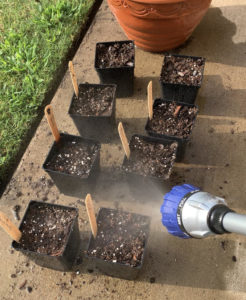
3. Not Enough Oxygen
Believe it or not, seeds need oxygen, but not in the same way you and I do. Seeds breathe at the cellular level. Oxygen is obtained from tiny air pockets found in the soil (another good reason to plant in loose soil!). A lack of oxygen will prevent the seed from burning the stored energy needed for the embryo to develop. This is why it is important to store seeds in air-tight containers to help prolong their shelf life. Aerobic respiration will continue until the plant has developed enough for photosynthesis to begin.
One reason for a lack of oxygen is overwatering. Too much water “drowns” the seed and compacts the soil. Improve the oxygen availability by properly watering seeds and seedlings and by planting in loose soil.
A lack of oxygen can also occur when seeds with thick or coarse seed coats have not undergone the scarification process, which enables water and gases (oxygen) to permeate the seed coat. Seeds are scarified or abraded in nature by weather, soil texture, or by passing through the digestive tract of animals and birds. Seeds that have been purchased or harvested from your garden may need to be scarified to increase their germination rate. You can learn more about seed scarification in this helpful article.
4. Planting Too Deep
Planting depth plays an important role in successful germination because it provides the right environment–temperature, water, oxygen and sometimes light–needed to grow. Each seed variety has different depth requirements. Seeds that have been planted too deeply may not be able to push back up through the soil to reach the surface. Dill, lettuce, oregano, and some pepper seeds, for example, require sunlight in order to germinate. Their depth requirements can be so shallow (1/8″ to 1/4″) that often gardeners simply press the seeds into the surface of the soil without covering them. Other seeds like acorn squash and butternut squash rely more on the temperature of the soil than sunlight to help trigger germination. Seed packets provide information regarding ideal planting depth, but in general, plant at a depth that is twice the diameter of the seed.
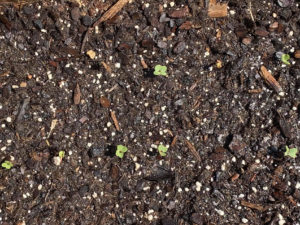
5. Damping Off
Damping off is a condition caused by a variety of different soil fungi, such as Fusarium, that attack the seed or seedling, causing it to rot. Pre-emergent damping off causes seedlings to fail to emerge from the soil after germinating, whereas post-emergent damping off causes the seedlings to wilt sometime after they have emerged. One sign of damping off is the presence of white mold.
To prevent damping off, do not overwater plants as soggy soil is a breeding ground for fungi. Provide good ventilation, especially if growing indoors, and reduce the humidity if necessary. If a plant has damping off, be sure to dispose of it in the trash. Do not compost it as most compost piles are not hot enough to kill the fungi. Also, properly clean all pots, containers, and tools with a 10% bleach solution (1 part unscented bleach to 9 parts water) to kill the spores. You can learn more about how to disinfect containers in this helpful article and tools in this one.
6. Bad Seeds
Seeds have a shelf life. The quality and thus, the viability of all seeds decreases over time. If stored properly, seeds may be viable for two years like celery seeds, or three to five years like tomato and pepper seeds, or five to eight years like melon seeds. Seed packets usually list a sow by date. Chances are the seeds will still germinate beyond this date, but the rate of germination will be lower.
To maximize the viability of seeds, store them in an air-tight container in a cool, dark place. If you save seeds from your garden, be sure to record when they were harvested so you can calculate their approximate shelf life. I store the seeds I save from my garden in a small plastic bag with a zip seal and a seed packet-sized envelope, then into this storage-organizer container. It is a system that many gardeners employ.
7. Pests
It may surprise you to know that some seeds disappear. It’s not some kind of magic that causes them to vanish, but seed-eating pests. Birds, mice, rats, voles, squirrels, etc., all love a nice seed snack. (If you have an abundance of these critters where you live then you know what I mean!) Cutworms, grubs, and a host of insect larvae also enjoy making a meal out of your seeds.
One way to remedy the problem is to sow seeds indoors under a grow light (this is one of the ones I use) or in a greenhouse. Once the plants are established and thus less vulnerable, they can be transplanted outdoors. Alternatively, you can use a row cover or bird and wildlife netting to protect seeds and seedlings while they develop.

8. The Elements
Another cause of vanishing seeds is the elements. Seeds are almost weightless and thus easily displaced by water. (I once planted nasturtium seeds that kept floating to the surface every time I watered them.) Others, especially those that require a shallow planting depth, can be carried away by stiff winds. To help prevent seed displacement, water with a gentle spray if watering by hand, or check the weather forecast before sowing to avoid planting on the eve of a storm. You could also cover the area with a secured tarp to deflect heavy rain.
9. Poor Quality
Unfortunately, not all seeds are quality seeds. Diseased plants or those exposed to chemicals can affect the quality of the seeds they produce. Often you can tell a seed is of poor quality by its deformed shape or discoloration. If something does not quite look right, especially compared to other seeds of the same variety, chances are it’s not. Even reputable companies can have a bad seed from time to time, but this should be rare and not the norm. Try seeds from several different seed companies to find a few that you trust to provide high quality seeds.
10. It’s Simply Not Time
Different types of seeds germinate at different rates. Some plants like broccoli, okra, dill, and chamomile take 10 to 21 days to emerge, while lavender can take up to four weeks before you see signs of life. Be sure to check the seed packet so you will know how long you will have to wait.
Even in nature, not all seeds are guaranteed to grow. But there are things you can do to increase the germination rate of the seeds you plant. Make your garden more productive by putting these simple suggestions into practice, and get ready for a better harvest!
Thank you for reading this article! If you found it helpful, please consider sharing it with others via email or social media!
[1] These are the minimum temperatures required for germination, not the optimum temperatures.
